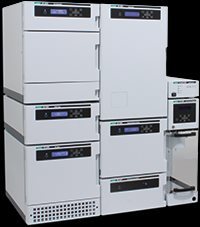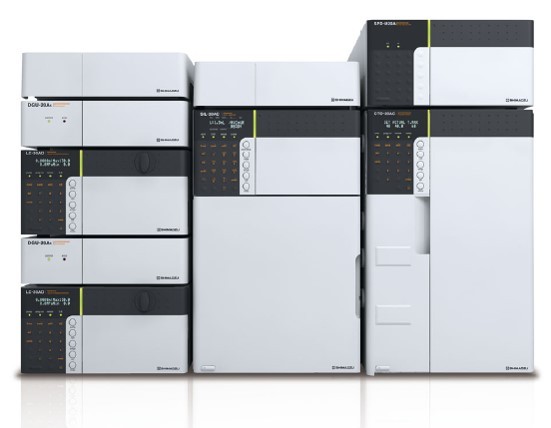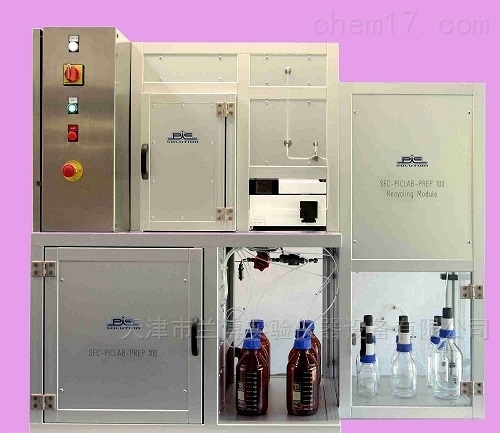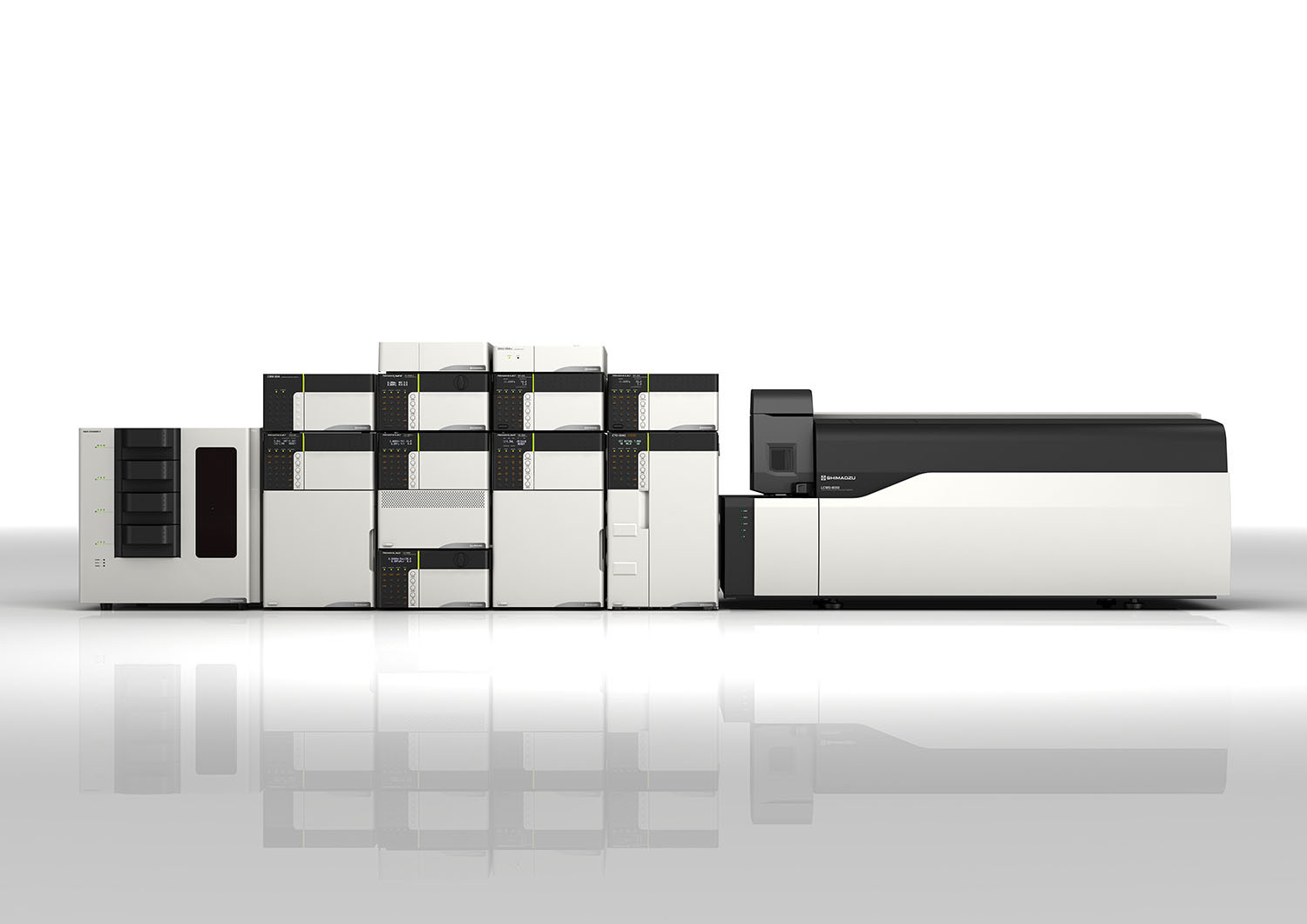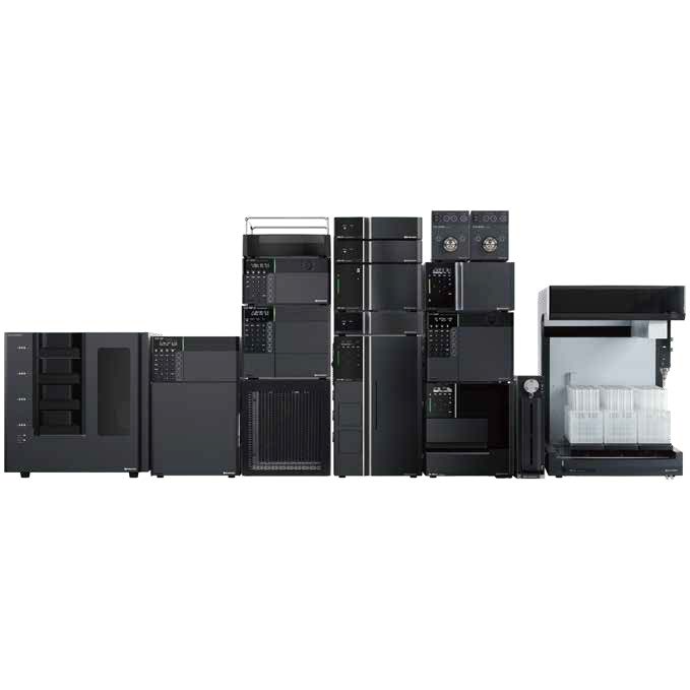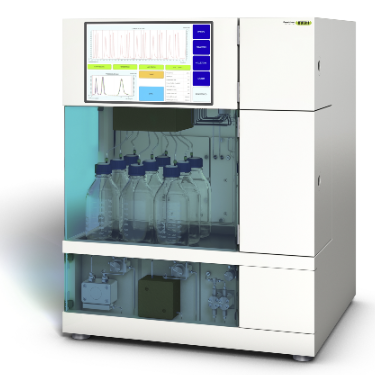方案详情
文
本应用说明表明,超临界二氧化碳SFC可以根据ASTM方法测定市售柴油中的非芳香和芳香含量。
方案详情

柴油燃料是一种复杂的碳氢化合物的混合物,包括非芳香族、单芳香烃和多芳香烃。众所周知,这些化合物的组成与燃料的十六烷数密切相关,即随着非芳烃浓度的增加,十六烷数的增加而增加。随着芳烃浓度的增加,废气中颗粒物的含量逐渐增加。柴油的分析在汽车和燃料工业中起着重要的作用。ASTM(美国测试和材料测试协会)在2003年发布了《使用火焰电离探测器(FID)测定柴油燃料和航空涡轮燃料中芳香含量和多核芳香含量的标准试验方法(D5186-03)》1)。本应用说明表明,超临界二氧化碳SFC可以根据ASTM方法测定市售柴油中的非芳香和芳香含量。本应用中结论:我们已经证明了JASCO SFC系统可以很容易地执行ASTM的分析要求。SFC APPLICATION NOTE 01-10 Determination of Non-Aromatic an d Aromatic Hydrocarbon Contents o f Diesel Fuels b y Supercritical Fluid Chromatography Diesel fuel is a complex mixture of hydrocarbons including non-aromat i c, mono-aromatic and poly-aromatic hydrocarbons. It is well known that the composit i on of these compounds is closely related to the cetane number of fuel in the way that the cetane number becomes higher as the concentration of non-aromatics increases. The number becomes lower and the amount of particulate matter in exhaust gas increases as the concentration of aromatics increases.The analysis of diesel fuel i s taking an important role in the automobile and fuel industries. ASTM ((American Society for Testing and Materials) published the“Standard Test Method for Determination 1of the Aromatic Content d and Polynuclear Aromatic Content of Diesel Fuels and Aviation Turbine Fuels S上 BySSupercritical Fluid Chromatography (D 5186 - 0033))”” u using a Flan e Ionization Detector (FID) in 2003D. This application note demonstrates that SFC with supercritical COz can determine the non-aromatic and aromatic contents in commercially available diesel fuel in accordance with the ASTM method. Experimental The SFC system we used consisted of a JASCO model PU-2080-CO2 Supercritical CO delivery pump,a GC-4000 Gas chromatograph with an FID (GL Science),JASCO’s CO-2060 Column oven, a BP-2080automatic back-pressure regulator, and a JASCO AS-2059-SF autosampler with a Chromatography Data System controlling and data processing data from all of above modules. The SFCpak SIL PA column (5 um silica gel, 4.6 mm I.D. x 250 mmL) was used for the sample separation. The column effluent was split upstream of the back-pressure regulator and a certain amount of the fluid was introduced into the FID as shown in Figure 1. Figure 1 Schematic diagram of the supercritical chromatogram 1 = bot t le of l iquefied carbon dioxide, 2=pump, 3 =autosampler, 4=heat i ng coil, 5= column,6= column oven, 7= preheat i ng coil , 8=splitter, 9=FID, 10= oven for GC, 11= cooling coil, 12=back-pressure regulator. Results and Discussion An SFC chromatogram of the standard mixture of 1-hexadecane (0.600 mg), toluene (0.0245 mg), tetralin (0.163 mg) and naphthalene (0.0163 mg) is shown in Figure 2. Excellent resolutions (Rs), 10.56 +/-0.04 and 6.27 +/-0.03 were obtained in the separation between 1-hexadecane and toluene peaks,.and tetralin and naphthalene peaks, respectively. Also excellent reproducibility of retention times (0.12 to 0.17% RSD,n=10) and peak areas (1.37 to 1.73% RSD, n=10) were obtained as listed in Table 1. Figure 2 SFC chromatogram of the standard mixture Peaks: 1 = n-hexadecane (0.600 mg), 2 = toluene (0.0245 mg), 3 = tetralin (0.163 mg), 4 = naphthalene (0.0163 mg)) Conditions: column = SFCpak SIL PA (4.6 mm IDx 250 mm L,5um), flow rate =2.0 mL/min, column temperature = 35℃, temperature of FID = 350℃, back pressure = 20 MPa, injection volume =I uL, GC oven temperature =200℃ Table 1 Reproducibility o f retention t i me and peak area Analyte n-hexadecane toluene tetralin naphthalene average of retention time (min) 1.2240 2.0602 2.7068 3.3290 standard deviation (min) 0.0021 0.0027 0.0032 0.0043 relative standard deviation (%) 0.17 0.13 0.12 0.13 average of peak area (pV sec) 510673 149556 21701 14901 standard deviation (uV sec) 6983 2472 347 258 relative standard deviation (%) 1.37 1.65 1.60 1.73 We evaluated the l inearity of peak response b by injecting 1uL each of standard mixtures with several different concentrations that were made up by diluting 2, 3 and 4 times with n-hexadecane and observed good l i nearity. We injected 1 uL of commercially available diesel fuel into the system and obtained the chromatogram which is shown in Figure 3. Four repetitive injections of the fuel quantified1t theecontents ofI non-aromatic hydrocarbons to b be (79.77±0.12%)and aromatic hydrocarbons to be (20.23±0.12%). Figure 3SFC chromatogram of diesel fuel Conditions : injection volume =1 uL. The other conditions are the same as in Figure 2. Nonaromatic and aromatic content is 79.77 and 20.23% (standard deviation =0.12%) We have shown the JASCO SFC system can easily perform the analysis requirements of the ASTM with precision and accuracy. Reference 1) “Standard Test Method for Determination of the Aromatic Content and Polynuclear Aromat i c Content of Diesel Fuels and Aviation TurbineFuels By Supercrit i cal Fluid Chromatography (D 5186-03)”
确定
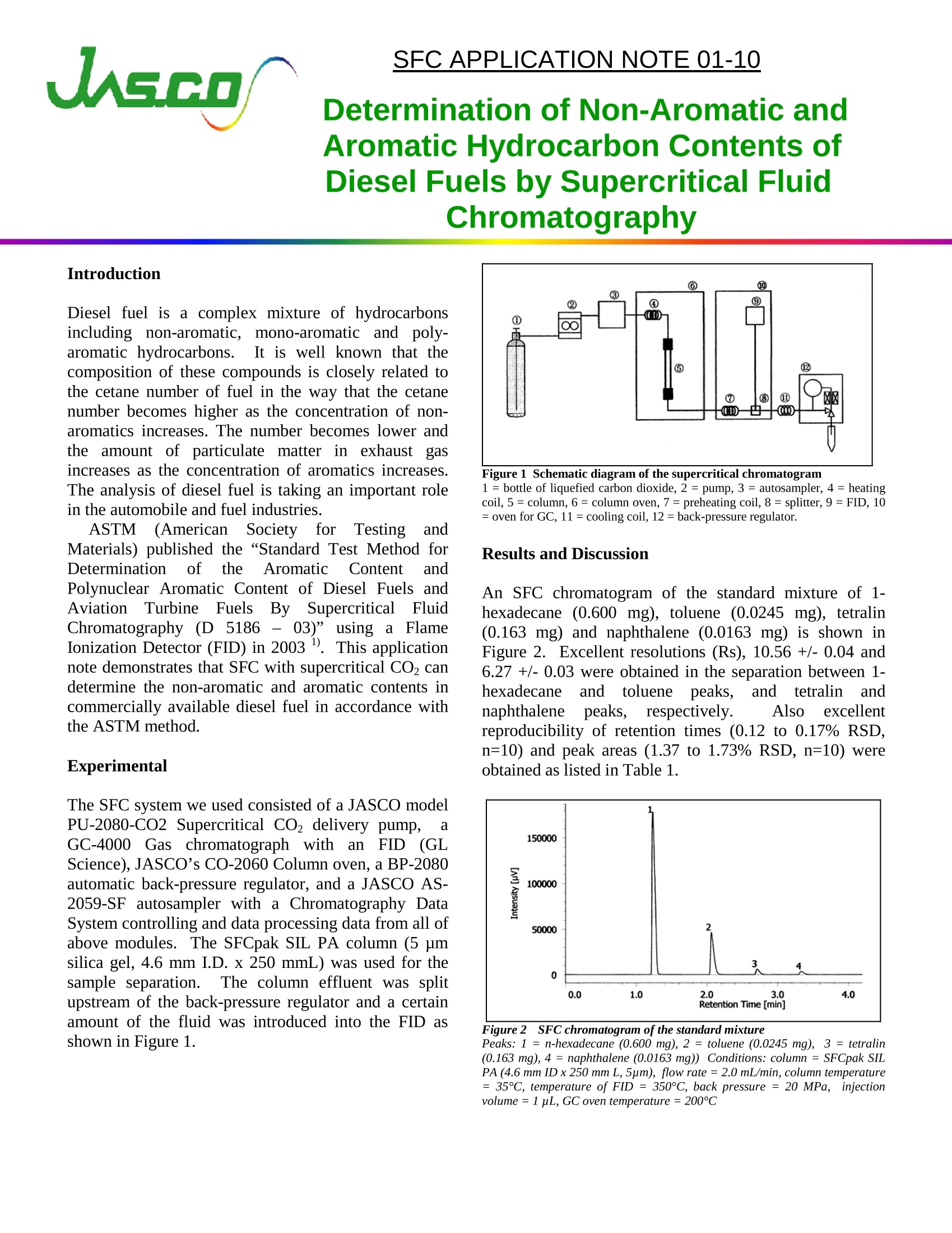

还剩1页未读,是否继续阅读?
佳士科商贸有限公司为您提供《ASTM D5186–通过SFC测定柴油燃料中的非芳烃和芳烃》,该方案主要用于柴油中非芳烃和芳烃含量、柴油检测,参考标准--,《ASTM D5186–通过SFC测定柴油燃料中的非芳烃和芳烃》用到的仪器有JASCO SFC4000超临界流体色谱仪
推荐专场
相关方案
更多
该厂商其他方案
更多

